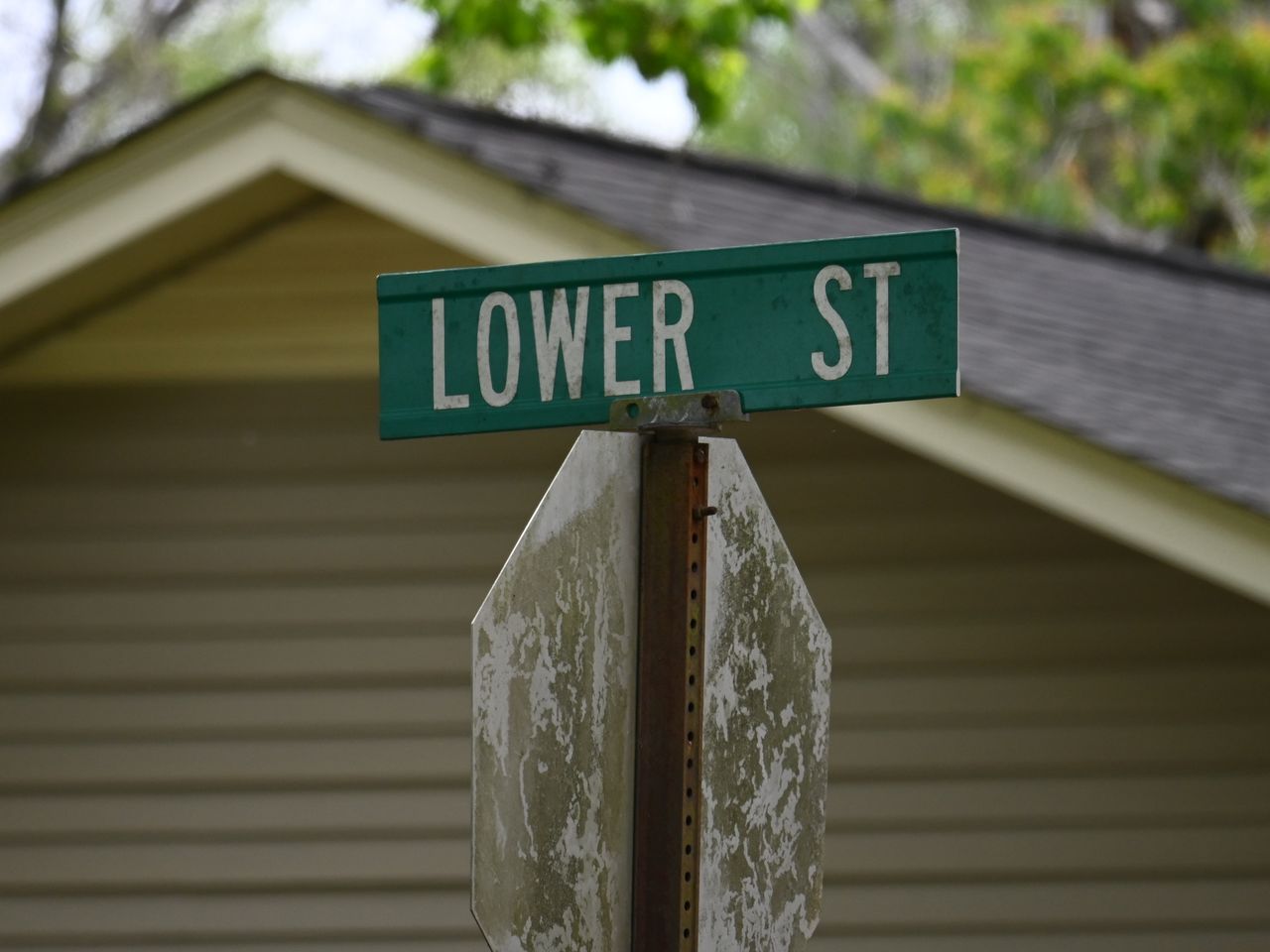Tennessee handling of body cam footage sparks renewed attention in Alabama
The investigation of an officer-involved shooting in Bay Minette ended this week and like so many others since police-worn body cameras became widely used in Alabama: The footage, authorities said, will not be released.
One of the reasons for that, according to investigators, is the family of Otis French Jr. – a Black man who died after an encounter with police last August — did not want it released. A group called Bay Minette Justice League says it’s “misleading” and “disingenuous” for authorities to relay the family’s views of the case. The family’s attorneys did not return a call for comment.
“If law enforcement agencies are supposed to be agents of justice, if they want to inspire trust with the communities they’re serving, why would they be against sharing an unfiltered account of their personal activities?” according to a statement to AL.com from the Bay Minette Justice League, which organized a rally in support of French two weeks after his August 22 death.
Robert Clopton, president of the Mobile County NAACP, agreed. “If there is nothing to hide, why not show the body cam footage?” he said.
Those concerns provide a contrast with the praise of the widespread dissemination of body cam footage by police agencies in Tennessee, following two high-profile tragedies this year.
“What we saw in Tennessee was amazing,” said State Rep. Juandalynn Givan, D-Birmingham, who has sponsored previous legislation that would establish parameters for releasing recordings in a timely manner to families or those who are killed or hurt during a police interaction, as well as the press.
She was referring to release of police body cam footage following the brutal killing of Tyree Nichols by five Black Memphis police officers. The more recent case occurred in Nashville, in which police released body cam footage of the March 27 shooting at Covenant School 24 hours after it happened. Six died before the shooter was shot and killed by officers.
“The Nichols case in Tennessee was a poster child and an example for everyone to show that you can actually work with law enforcement, make sure every ‘t’ is crossed and ‘i’ is dotted and provide this information to the victim’s family through a process,” Givan said. “There was transparency.”
Tennessee’s approach
This image provided by Metropolitan Nashville Police Department shows bodycam footage of police responding to an active shooting at The Covenant School in Nashville, Tenn., on Monday, March 27, 2023. The former student who shot through the doors of the Christian elementary school and killed three children and three adults had drawn a detailed map of the school. (Metropolitan Nashville Police Department via AP)AP
Alabama is considered among the strictest in the nation for releasing body cam videos. It has no law regulating the release of the footage, and legislation introduced by Givan since 2019 has gone nowhere.
Givan said she is making edits to her previous bills and will update her proposal to reflect how Tennessee handled the issuance of body cam footage following Nichols’ death. She said a new bill on the issue will be released soon.
Givan hopes Republicans, who hold a supermajority status in the Alabama Legislature, will be willing to consider the issue and advance the bill to the House floor.
State Rep. Allen Treadaway, R-Birmingham, and a former Birmingham city police captain, said he was not aware of a renewed effort on the release of body cam footage, and was unaware of any new details that might be forthcoming in a revised piece of legislation.
“While I am all for transparency, we have to do it in a responsible way, so it doesn’t jeopardize investigations,” Treadaway said. “That will be a key.”
Givan said she fears Alabama does not have similar parameters in place like Tennessee when it comes to releasing body cam footage, and that it could leave cities vulnerable to rioting and looting depending on the magnitude of a case.
Memphis police took about three weeks to release the body cam footage in Nichols’ death. It was a lengthy time frame compared to the rapid speed of Nashville’s release of a shooting that led to the killing of three children and three adults.
According to an article in the Tennessean, the time frame in releasing the Nichols body cam footage in Memphis was historically brief for that police agency.
In Tennessee, police agencies oversee the handling of body cam video footage, not unlike what occurs in Alabama. Authorities contact the Tennessee Bureau of Investigations to notify them on the dissemination of audio, video, and other recordings, but the timing of the release is up to the independent police agency.
Tennessee state law considers police-worn body camera footage public record in most cases, as long as it has been redacted to prevent the release of confidential information.

Rep. Juandalynn Givan (Joe Songer for al.com).Joe Songer
Alabama is one of about a dozen states whose legislatures have not established any rules for public access to body cam footage, according to data compiled by the Urban Institute.
The only guidance on the issue in Alabama comes from the Alabama State Supreme Court which ruled by an 8-1 vote in 2021, that police body cam footage is not subject to the state’s open records law. The court’s ruling allows police to continue denying media or public requests for a host of police records, no matter the public controversy.
Givan said the situation poses a danger in Alabama if a high-profile officer-involved shooting occurs.
“You’re going to have a problem,” she said, adding that releasing body cam footage and other police data like surveillance videos and audio shows agencies “being proactive and saving lives and taxpayers dollars so you don’t have to go in and rebuild a local area where they are looting or knocking windows out.”
‘Work for everybody’
Treadaway said the evolution of the issue in other states could lead to Alabama lawmakers reconsidering their stance on the issue.
“You are seeing a movement around the country that more and more videos that can be released are being released,” he said.
In Alabama, he said, the release of investigative materials like body cam footage will require agreement from multiple interest groups. Among them will be the Alabama District Attorneys Association, Alabama Sheriffs, and chiefs of police, among others.
“It has to work for everybody,” Treadaway said.
J. Evans Bailey, an attorney with the Alabama Press Association, said there has been little interest from those groups and others in amending the state’s investigative privilege statute when it comes to releasing police body cam footage.
He also noted that prior legislation, which the APA supported, did not advance far.
“There are a lot of risks associated with leaving all the discretion to release body camera videos with law enforcement,” Bailey said. “Lack of transparency, lack of accountability, eroding of public confidence in law enforcement and skewing or unbalancing publicly available information – law enforcement will only voluntarily release videos when they do ‘good,’ but will never voluntarily release videos when they do ‘bad’ – are just a few that come to mind,” Bailey said.
He said Alabama Gov. Kay Ivey’s order in January for state government to be more transparent should be followed up with action by the Legislature.
“As it stands, the next Governor can undo her order on the first day of a new term with a stroke of the pen,” Bailey said, adding that the APA supports legislation that codifies her order for all state and local governments.
Issues continue
Without any law in place addressing body cam footage, activists like Clopton believe concerns will continue to pop up after situations arise.
In Montgomery, the family of Joseph Pettaway has fought for years to get body camera footage released of his 2018 death following a police dog bite. A federal judge declined to release the video late last month, citing an ongoing civil trail and the potential problems officials fear might happen if the footage becomes public.
In Mobile last month, Police Chief Paul Prine declined to release the video footage of an officer-worn body cam following the March 7 shooting of 24-year-old Kordell “Joe” Jones, citing an ongoing investigation.
Prine said last month he felt the shooting was justified. It occurred while a SWAT team, surrounding a house on Charles Street, attempted to arrest Jones’ brother – Jason Jones – for an armed robbery. Kordell Jones, Prine said, lept from a back window, was completely nude and armed with an assault rifle. Police shot and killed him.
Clopton said he has unanswered questions on whether Jones was running away from or toward police at the time of the shooting. He said that body cam footage would be able to put his questions to rest.
“It’s not necessarily for the person and the victim, but it protects law enforcement,” said Clopton. “It will exonerate any accusations and charges against law enforcement. But we have a serious problem with them not sharing the footage of the body cam.”

Otis French Jr. was shot and killed during an altercation with a Bay Minette police officer on August 22, 2022, on Lower Street near U.S. 31 in Bay Minette, Ala. (John Sharp/[email protected]).
In both the Mobile and Bay Minette cases, authorities have declined to release the name of the officer involved, citing officer safety. And the Bay Minette case, the investigation by the Baldwin County Major Crimes Unit is considered closed.
A news release issued on Monday detailed some of the events leading to French’s August 22 death following a traffic stop for a broken taillight.
French, following a pat down by police, allegedly struck a police officer and fled to a backyard of a nearby property. During a police foot pursuit, French allegedly lowered his shoulder and tackled the officer as the officer tried to tase him.
The taser, according to authorities, was ineffective and the two were engaged in a fight on the ground. French was then able to gain control of the taser and tased the officer, authorities say. The officer then drew his pistol and shot French.
The Alabama Attorney General’s Office reviewed the evidence, and determined there was insufficient evidence to establish probable cause that the officer committed a crime, according to authorities. The review determined the officer was in the lawful performance of his duties and responded with a “reasonable amount of force under the circumstances.”
The Baldwin County Major Crimes Unit says that after discussing the case with the French family, no evidence or any more details will be released.
The Bay Minette Justice League, in its statement to AL.com, said the organization believes, in general, that body cam footage should be released after officer-involved shootings.
“Willfully sharing footage in a timely manner helps us feel like we’re not being misled and kept in the dark, which is a pervasive sentiment in the community regarding O.J.’s (French’s) death,” the group said.
